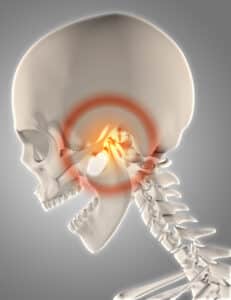Orthodontics and Jaw Pain: Causes and Solutions
Jaw pain is a common concern that affects many individuals. At Hanson Place Orthodontics, we understand the significant link between orthodontics and jaw pain as part of comprehensive orthodontic care. Misaligned teeth, issues with the temporomandibular joint (TMJ), and bruxism (teeth grinding) are just a few causes.
The discomfort associated with jaw pain can range from mild to severe, often impacting one’s ability to eat, speak, and enjoy daily activities. This is one of the reasons why many people seek orthodontics Brooklyn NY, and other places to alleviate the pain. Our goal is not only to create beautiful smiles but also to ensure the overall comfort and well-being of our patients.
Understanding Jaw Pain
Causes of Jaw Pain
1. Malocclusion and Misaligned Teeth
One of the leading causes of jaw pain is malocclusion, a condition where the teeth do not fit together properly when the jaws are closed. Malocclusion can result from various factors, including genetics, childhood habits like thumb sucking, or the natural growth of teeth. When your teeth are misaligned, it can lead to an uneven distribution of pressure when biting or chewing, causing strain on the jaw muscles.
2. Temporomandibular Joint (TMJ) Issues
The temporomandibular joint, often referred to as the TMJ, connects your jawbone to your skull. Problems with this joint, known as temporomandibular joint disorder (TMD), can contribute to jaw pain. TMD can occur due to a range of factors, such as injury, arthritis, or excessive clenching or grinding of teeth. When the TMJ is not functioning correctly, it can result in discomfort, clicking or popping sounds, and limited jaw movement.
3. Bruxism (Teeth Grinding)
Bruxism is a common condition where individuals grind or clench their teeth, often unconsciously, during sleep or while awake. This habit can exert excessive pressure on the teeth and jaw joints, leading to jaw pain, headaches, and worn-down teeth. Stress, anxiety, or misaligned teeth can all contribute to bruxism, underscoring the significance of addressing orthodontic issues to treat this condition.
Symptoms of Jaw Pain
Recognizing the symptoms of jaw pain is crucial for early intervention and effective treatment. Common symptoms include:
1. Pain or Discomfort While Chewing
If you experience pain or discomfort in your jaw when chewing food or even during everyday activities like speaking or yawning, it could be a sign of an underlying orthodontic issue.
2. Jaw Clicking or Popping
Audible clicking or popping sounds when you open and close your mouth may indicate problems with the temporomandibular joint. It’s essential to consult with an orthodontist if you notice these symptoms.
3. Headaches and Earaches
Jaw pain can radiate to other areas of the head, leading to persistent headaches or earaches. These symptoms can significantly impact your quality of life and should not be ignored.
The Impact of Jaw Pain on Overall Health
Jaw pain can extend beyond physical discomfort; it can affect your overall well-being. Chronic pain can lead to stress, sleep disturbances, and even nutritional deficiencies due to difficulty eating. Addressing the root causes of jaw pain through orthodontic treatment can not only relieve the pain but also improve your quality of life and prevent further complications.
Orthodontics and Jaw Pain
How Orthodontics Affects Jaw Alignment
Orthodontics plays a significant role in addressing jaw pain by correcting misaligned teeth and improving overall jaw alignment. Here’s how:
1. Orthodontic Treatments for Malocclusion
Orthodontic treatments, such as braces or clear aligners, are designed to reposition misaligned teeth. By gently applying pressure to the teeth over time, orthodontic appliances gradually move them into their correct positions. This correction not only enhances the appearance of your smile but also ensures that your upper and lower teeth fit together properly when you bite down.
2. Aligners and Braces
Traditional braces and modern clear aligners, like Invisalign, are two common orthodontic approaches for addressing misalignment. Braces use metal brackets and wires to guide tooth movement, while clear aligners offer a more discreet and comfortable option. Regardless of the method chosen, both are effective in achieving better jaw alignment and reducing the jaw pain associated with malocclusion.
Addressing TMJ Issues
1. Orthodontic Solutions for TMJ Problems
Temporomandibular joint disorders (TMD) can cause severe jaw pain and discomfort. Orthodontists can provide tailored treatments to alleviate TMD symptoms. These may include orthodontic appliances or techniques that adjust the bite and reduce strain on the TMJ, ultimately relieving pain and improving jaw function.
2. Customized Treatment Plans
Orthodontists create individualized treatment plans based on each patient’s unique needs and symptoms. These plans may involve a combination of orthodontic treatments and therapies designed to provide the most effective relief from TMJ-related jaw pain.
Managing Bruxism
1. Bite Guards and Nightguards
For individuals suffering from bruxism, orthodontists can create custom-made bite guards or nightguards. These oral appliances are designed to protect teeth from the damaging effects of grinding or clenching. By preventing further wear and tear on the teeth and reducing muscle tension in the jaw, bite guards and nightguards help manage bruxism-related jaw pain.
2. Orthodontic Techniques to Mitigate Bruxism
Orthodontic treatment can also address the underlying causes of bruxism, such as misaligned teeth. By correcting the bite and alignment issues that contribute to teeth grinding, orthodontics not only provides relief from jaw pain but also addresses the root of the problem, leading to long-term improvement.
Orthodontic Treatment Options
Traditional Braces
Traditional braces have been a trusted orthodontic solution for decades, and they are particularly effective in addressing jaw misalignment. Here’s how they work:
- Brackets and Wires: Small brackets that attach to the teeth and connect with archwires make up braces. These components work together to apply gradual pressure to the teeth, guiding them into their proper positions.
- Adjustments: Your orthodontist makes adjustments on a regular basis to tighten the wires and continue the tooth movement process. This controlled pressure helps improve the alignment of your teeth, ultimately leading to better jaw alignment.
Advantages and Considerations
- Precise Alignment: Braces provide precise control over tooth movement, making them highly effective for addressing even complex cases of malocclusion.
- Reliable Results: With proper care and adherence to your orthodontist’s instructions, braces consistently deliver reliable and long-lasting results.
- Visible Treatment: It’s important to note that traditional braces are visible, which may be a consideration for some patients concerned about aesthetics.
Invisalign and Clear Aligners
Clear aligners, like Invisalign, have gained popularity for their discreet and comfortable approach to orthodontic treatment. Here’s how they contribute to jaw pain relief:
- Custom-Made Aligners: Invisalign treatment involves a series of custom-made, clear plastic aligners. These aligners are designed to fit snugly over your teeth, gently applying pressure to guide them into proper alignment.
- Improved Comfort: The absence of brackets and wires reduces the risk of irritation and discomfort often associated with traditional braces.
Benefits of Clear Aligners
- Aesthetic Appeal: Clear aligners are virtually invisible, making them a popular choice for individuals who prefer a more discreet orthodontic treatment option.
- Removable: Clear aligners can be removed for eating, brushing, and flossing, allowing for better oral hygiene and fewer dietary restrictions during treatment.
- Reduced Jaw Pain: Their design promotes more even pressure distribution during tooth movement, which can contribute to reduced jaw pain for many patients.
Surgical Orthodontics
In some cases of severe jaw misalignment or complex orthodontic issues, surgical orthodontics may be recommended. Here’s when surgical intervention becomes necessary:
- Severe Malocclusion: When the misalignment is too extensive for non-surgical orthodontic treatments to address effectively.
- Jaw Discrepancies: Surgical orthodontics can correct issues involving the size, shape, or position of the upper or lower jaw.
Collaboration Between Orthodontists and Oral Surgeons
Surgical orthodontics is a collaborative effort between orthodontists and oral surgeons. Your orthodontist will work closely with an oral surgeon to develop a treatment plan tailored to your specific needs. While surgical orthodontics is typically more complex, it can provide significant improvements in jaw alignment and pain relief for those with severe orthodontic issues.
Choose Hanson Place Orthodontics for Your Treatment Needs
At Hanson Place Orthodontics, we’re committed to your well-being and aim to provide exceptional care that exceeds your expectations. Our team is dedicated to ensuring you receive the respect, professionalism, and sensitivity you deserve. As Brooklyn’s exclusive SureSmile® provider, we offer advanced technology that can reduce treatment time by up to 40%.
Additionally, our expertise in soft tissue laser procedures allows us to perform many treatments that might otherwise require a referral to an oral surgeon, saving you time and money. We understand the importance of your time, and we’ve structured our appointments to minimize waiting so you can spend more time enjoying life with a beautiful smile.
Whether you’re a child, teen, or adult, we’re here to meet your unique needs and expectations. Contact Hanson Place Orthodontics today for a complimentary orthodontic consultation, and let us help you start your journey to a lifetime of happy smiles. Your smile matters, and we’re here to make it exceptional.






